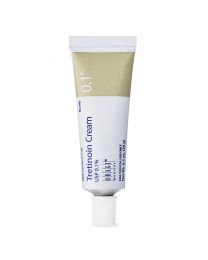- Home
- About
-
- < Services
-
- < By Skin Concern
- Acne Scarring
- Active Acne
- Age Spots/Sun Damage
- Brown Spots
- Cheek and Lip Enhancement
- Dark Circles
- Dehydrated Skin
- Eyelid Wrinkles
- Facial Balance
- Facial Veins/Capillaries
- Facial Volume Loss
- Fine Lines
- Frown Lines
- Hair Loss
- Hyperpigmentation/ Uneven Skintone
- Immune System Boost
- Large Pores
- Melasma & Freckles
- Nail Fungus
- Physicial Exhaustion/Stress
- Rosacea/Redness
- Scars
- Sexual Wellness
- Skin Laxity
- Spider Veins
- Stretch Marks
- Submental Chin
- Thin Lips
- Uneven Skin Texture
- Unwanted Fat/Cellulite
- Unwanted Hair
- Varicose Veins
- Wrinkles
-
- < By Treatment Type
- Acne Treatments
- BBL
- Body Contouring
- BBL
- Eye Treatments
- Facial Sculpting
- Facials
- Fat Reduction
- Fillers
- Hair Restoration
- Injectables
- IV Vitamin Therapy
- Laser Hair Removal
- Laser Toning
- Light Therapies
- Massages
- Laser/Light Treatment
- Microdermabrasion
- Microneedling
- Nail Fungus Treatment
- Neurotoxins
- Peels
- Permanent Makeup
- PRP Procedures
- Skin Resurfacing Treatments
- Skin Tightening and Toning
- Whole Body Treatments
-
- < Products
-
- < By Product Type
- Acne Scarring
- Acne Treatments
- Anti-Aging
- Body
- Brightening
- Cleansers
- Eye Treatments
- Exfoliants
- Hair Care
- Lip Treatments
- Masks
- Moisturizers
- Neck Treatments
- Redness & Rosacea
- Retinoids & Exfoliants
- Scarring & Post-Procedure
- Serums
- Skin Rejuvenation & Antioxidants
- Sun Protection
- Toners
- Contact Us
- Sign In
- Sign Up
Acne Scarring
Acne Scarring
{{block class="DermPRO\Flexslider\Block\Flexslider" name="flexslider_GS-00065" template="DermPRO_Flexslider::flexslider.phtml" code="GS-00065" start_slide_id="1"}}- About
- Treatment
- Videos
About
Acne Scarring
Acne scars can form as a result of inflamed acne blemishes.
Causes
Inflamed acne blemishes are caused when the skin pores become overloaded with excess oil, dead skin cells and bacteria. The pore swells, which causes a break in the follicle wall. If the lesion is shallow, it usually heals quickly. However, if there is a deep break in the pore wall, infected material can spill out into the surrounding tissue and create a deeper lesion. The skin attempts to repair these lesions by forming new collagen fibers. These repairs are not as smooth and flawless as the original skin, resulting in acne scarring.
Risk Factors
Almost 95% of patients with acne will experience some form of acne scarring. There are no specific risk factors, but some believe genetics plays a role.
Symptoms
There are two main types of acne scars:
Hypertrophic or keloid scarring are caused when the body produces too much collagen as acne wounds heal, resulting in a mass of raised tissue on the skin's surface.
Atrophic or depressed scarring develops when there is a loss of tissue. There are two common types of atrophic scarring. "Icepick" scars are usually small, yet obvious holes in the skin. "Boxcar" scars are depressed areas, usually round or oval in shape with steeply angled sides, similar to chickenpox scars.
Diagnosis
A doctor will be able to diagnose a keloid or hypertrophic scar with an examination. The most common treatment for both keloids and hypertrophic scars is a cortisone steroid injection. It causes the keloid to lessen in size and the hypertrophic scar to disappear altogether. Cryosurgery and laser treatment are also available for keloids.
*Source:
American Academy of Dermatology American Society for Dermatologic SurgeryTreatment
Treatment
Treatments include laser treatments, minor skin surgeries, chemical peels, dermabrasion and fillers. A dermatologist or a dermatologic surgeon can perform these treatments in a medical office.
Prevention
There is no way to prevent scarring, but you can do certain things to keep them from getting worse. Stay out of the sun. Overexposure to the sun can darken scars and make them look more prominent. You should avoid irritating the inflamed skin. Overwashing or scrubbing scarred areas can further reduce skin elasticity and heighten the appearance of the scar. You also should not pick at scars. Bacteria from unwashed fingers and nails increase the risk of additional cysts forming, leading to the development of a larger scar.
*Source:
American Academy of Dermatology American Society for Dermatologic SurgeryVideos
Acne Scarring Videos
REQUEST AN APPOINTMENT
*required fields






